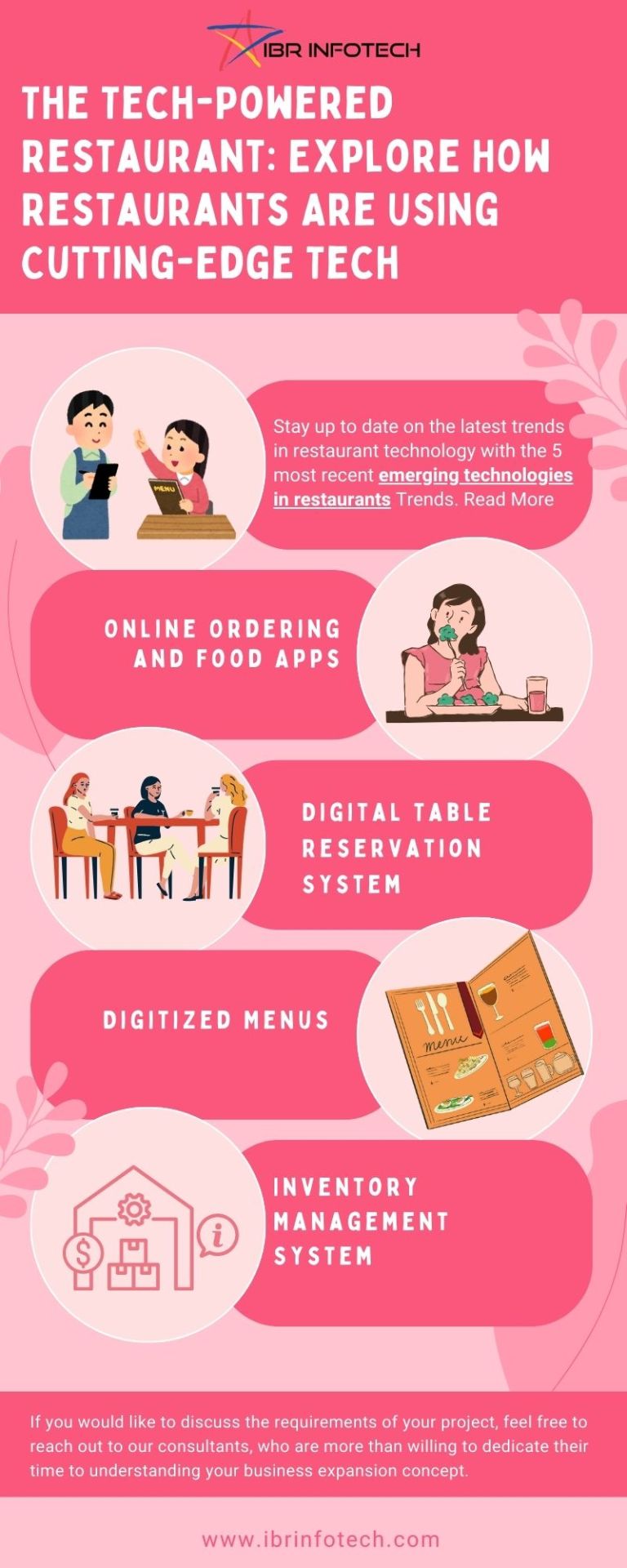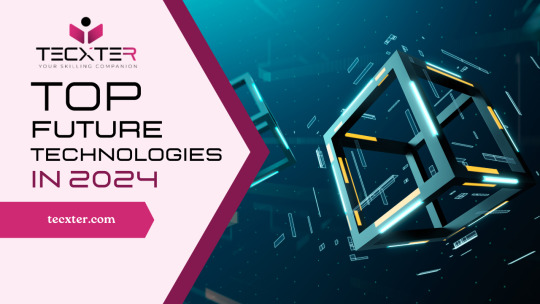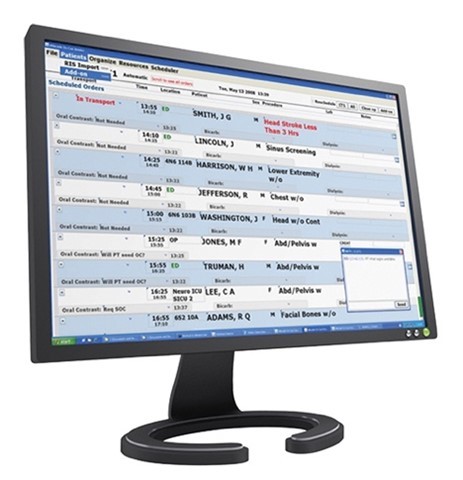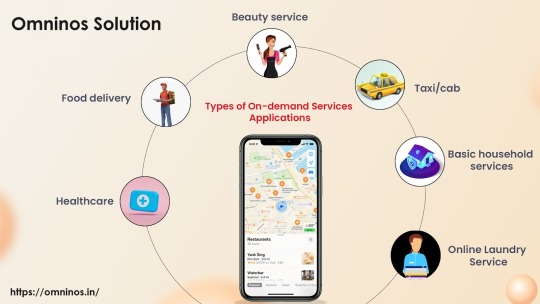#emerging technologies in software development
Explore tagged Tumblr posts
Text
Exploring the Latest Trends in Software Development
Introduction The software is something like an industry whose development is ever-evolving with new technologies and changing market needs as the drivers. To this end, developers must keep abreast with current trends in their fields of operation to remain competitive and relevant. Read to continue .....
#analysis#science updates#tech news#technology#trends#adobe cloud#business tech#nvidia drive#science#tech trends#Software Solutions#Tags5G technology impact on software#Agile methodologies in software#AI in software development#AR and VR in development#blockchain technology in software#cloud-native development benefits#cybersecurity trends 2024#DevOps and CI/CD tools#emerging technologies in software development#future of software development#IoT and edge computing applications#latest software development trends#low-code development platforms#machine learning for developers#no-code development tools#popular programming languages#quantum computing in software#software development best practices#software development tools
0 notes
Text
Welcome to InnovateHub TechTalk: Unleashing the Tech Frontier
Greetings, fellow tech enthusiasts, and welcome to the inaugural edition of InnovateHub TechTalk! I am Lucas Redford, your guide on this thrilling expedition into the boundless realms of technology. With each keystroke and pixel, we'll embark on a journey to unravel the mysteries, embrace the innovations, and discuss the trends that shape our digital world.
Charting New Horizons:
In the age of rapid technological advancement, it's impossible to ignore the transformative impact that technology has on our lives. From the moment we wake up to the time we rest our heads, technology surrounds us, empowering, entertaining, and evolving at an unprecedented pace.
Our Quest:
At InnovateHub TechTalk, our mission is simple yet profound: to ignite your curiosity and keep you informed about the dynamic world of technology. Whether you're a seasoned coder, a budding entrepreneur, a digital artist, or just someone intrigued by the possibilities, this platform is your haven.
What Awaits You:
As we embark on this voyage together, here's a glimpse of what you can expect from InnovateHub TechTalk:
Innovative Spotlights: Venture into the heart of innovation as we showcase groundbreaking technologies and inventions that are reshaping industries and society.
Tech Chats with Experts: Join me in engaging conversations with thought leaders, industry experts, and visionaries who are shaping the course of technology.
CodeCraft Corner: Whether you're a coding novice or a seasoned pro, our CodeCraft Corner will be your source for coding tips, projects, and insights to elevate your programming prowess.
FutureTalk: Delve into the crystal ball as we discuss emerging trends, speculative tech, and the potential future landscapes that await us.
Be a Part of the Conversation:
InnovateHub TechTalk is not just a blog; it's a community. Your thoughts, questions, and insights are the catalysts that will drive our discussions forward. Don't hesitate to jump into the comment section, share your perspectives, and connect with fellow tech aficionados.
With great excitement, I invite you to journey with me through the digital maze, the electronic wonderland, and the data-driven universe that defines our age. Together, we'll decode complexities, celebrate achievements, and ponder the limitless possibilities that lie ahead.
As we dive into the sea of 1s and 0s, remember that innovation knows no bounds, and at InnovateHub TechTalk, we're poised to explore it all.
Welcome aboard, tech voyagers!
Lucas Redford
Founder and Chief Explorer, InnovateHub TechTalk
#Technology Trends#Innovation Insights#Tech Enthusiasts#Digital Exploration#Future of Tech#Coding Tips#Emerging Technologies#Tech Conversations#User Experience Design#Digital Transformation#Artificial Intelligence#Internet of Things#Cybersecurity#Software Development#Gadgets and Devices#Web Technology#Virtual Reality#Blockchain#Tech News Updates#Data Privacy#Cloud Computing#Tech Industry#Online Innovation#Science and Technology#Technology Community#Tech Insights#Cutting-Edge Tech#Digital Evolution#Innovation Spotlight#Technology Exploration
2 notes
·
View notes
Text
#Software Development Trends#Top Tech Trends#IT Innovation#Agile Development#DevOps Practices#Digital Transformation#Emerging Technologies#Cloud Computing#Custom Software Trends#Future of Software Development
1 note
·
View note
Text
Explore how IoT connects the dots between software development, web development, and machine learning, driving innovation across industries with smarter, interconnected systems and real-time data solutions.
#Internet of Things#IoT#software development#web development#machine learning#IoT applications#smart devices#real-time data#connected systems#emerging technologies
0 notes
Text

We at MicroBurstMedia, a digital solutions company is excited to announce the launch of our new book—The Beginners Guide to AI Automation Setup System!
Highly recommended if you're a beginner looking to get started in the online workspace, learn how to turn your set of skills and experience into your own automated sales system for business and or work purposes, our book is available and on sale as we continue to gain interests among tech users, business startups and entrepreneurs across web platforms.
This book breaks down the construct of this topic on a micro level scale, along with setup instructions showing how we got started and how you can too providing AI computer software system recommendations making it accessible for everyone—even if you’re not tech-savvy—by any means we ensure you get as much out of it guaranteed along with online support to assist in answering any questions you may have!
🔊But it doesn't stop there, you can also get it in an eBook version which is available at an introductory price of $29.99, now on sale (90% OFF) at $3.00 for a LIMITED-TIME!
In addition, we are providing digital copies of our presentation guide ♦️FOR FREE♦️ which you can access at anytime. Want in on this info? Send us a DM!
This Information📚 Was brought to You by MicroBurstMedia, a digital solutions company. 🏢
#software#information technology#cyber security#techinnovation#analytics#developer#technologynews#technology#technologies#emerging technologies#advanced technologies#new technologies#innovation#tech
0 notes
Text

Curious about the future of dining? Explore the 5 hottest tech trends transforming restaurants! From AI-powered experiences to next-level automation, discover how innovation is serving up a tastier future
#Emerging Technologies in Restaurants#Restaurants Software Development#Restaurants Software Development Company#Restaurants Software Development Services
0 notes
Text
Stay Ahead of the Curve: Top Emerging Software Technologies for 2024! How Texter Can Help You Harness Their Power

Introduction:
In the present quickly developing mechanical scene, remaining on the ball is fundamental for organizations and people. As we look forward to 2024, a few arising programming innovations are ready to upset different ventures. In this article, we will investigate these state-of-the-art advances and how Texter can help you saddle their ability to accomplish your objectives.
Artificial Intelligence and Machine Learning:
Artificial intelligence and Machine Learning have previously had a tremendous effect in different fields. In 2024, we hope to see significantly more noteworthy headway around there. Man-made intelligence-fuelled applications can robotize monotonous undertakings, upgrade dynamic cycles, and give important experiences. Texter has practical experience in creating man-made intelligence and ML arrangements modified to your particular prerequisites, engaging you to open up the maximum capacity of these advancements.
Blockchain Technology:
The decentralized and secure characteristics of blockchain have led to its increasing adoption. We predict a broader industry use of Blockchain in 2024, encompassing banking, supply chain management, healthcare, and other sectors. Texter provides blockchain development and consulting services, assisting companies in implementing blockchain technologies to improve transparency, expedite processes, and safeguard data integrity.
Extended Reality (XR):
Extended Reality (XR) is the result of the confluence of Augmented Reality (AR) and Virtual Reality (VR). It is anticipated that XR will advance significantly in 2024 in sectors like gaming, healthcare, education, and training. By generating immersive and engaging experiences, Texter can help you fully use the potential of XR and connect with your audience in a way that has never been possible.
Internet of Things (IoT):
The way we live and work is still changing as a result of the Internet of Things. IoT makes it possible for common things to be connected to the internet, improving automation, data collecting, and analysis. We may anticipate much more IoT integration in industrial processes, healthcare systems, smart cities, and smart homes by 2024. To assist you in making use of the promise of IoT for increased productivity and efficiency, Texter provides IoT development and consulting services.
Edge Computing:
A decentralized computing infrastructure referred to as "edge computing" moves the storage and processing of data closer to the location wherein the data is generated. Edge computing is anticipated to resolve issues with latency, bandwidth, and security in the Internet of Things and artificial intelligence age by 2024. By using edge computing technologies, Texter can help you give your apps better security, lower latency, and quicker processing.
Quantum Computing:
Based on the ideas of quantum physics, quantum computing bears the promise of revolutionizing processing power and providing effective solutions to challenging issues. We anticipate notable developments in this sector in 2024. Texter continues to be at the forefront of research on quantum computing, providing advisory and development services to investigate opportunities and fully use the potential of this new technology.
Conclusion:
2024 has a plethora of fascinating opportunities in the realm of software technology. Businesses can obtain a competitive advantage and individuals can discover new prospects by adopting these modern technologies. As your guide on this revolutionary trip, Texter offers its experience in artificial intelligence, machine learning, blockchain, XR, Internet of Things I edge computing, and quantum computing. Keep up with the times and use Texter to better create the future of your company by utilizing the versatility of these cutting-edge software innovations.
#data science#developer community#learn python#it course#non it course#it training#it classes#it training courses#it certifications courses#it training classes#it learning courses#it course information#non it to it courses#Software Development#Emerging Technologies#Low Code Development#python language#programming community#programming language in python#codinglife#automation#machine learning#artificial intelligence
0 notes
Text

Hubble Space Telescope: Exploring the Cosmos and Making Life Better on Earth
In the 35 years since its launch aboard space shuttle Discovery, the Hubble Space Telescope has provided stunning views of galaxies millions of light years away. But the leaps in technology needed for its look into space has also provided benefits on the ground. Here are some of the technologies developed for Hubble that have improved life on Earth.

Image Sensors Find Cancer
Charge-coupled device (CCD) sensors have been used in digital photography for decades, but Hubble’s Space Telescope Imaging Spectrograph required a far more sensitive CCD. This development resulted in improved image sensors for mammogram machines, helping doctors find and treat breast cancer.

Laser Vision Gives Insights
In preparation for a repair mission to fix Hubble’s misshapen mirror, Goddard Space Flight Center required a way to accurately measure replacement parts. This resulted in a tool to detect mirror defects, which has since been used to develop a commercial 3D imaging system and a package detection device now used by all major shipping companies.

Optimized Hospital Scheduling
A computer scientist who helped design software for scheduling Hubble’s observations adapted it to assist with scheduling medical procedures. This software helps hospitals optimize constantly changing schedules for medical imaging and keep the high pace of emergency rooms going.

Optical Filters Match Wavelengths and Paint Swatches
For Hubble’s main cameras to capture high-quality images of stars and galaxies, each of its filters had to block all but a specific range of wavelengths of light. The filters needed to capture the best data possible but also fit on one optical element. A company contracted to construct these filters used its experience on this project to create filters used in paint-matching devices for hardware stores, with multiple wavelengths evaluated by a single lens.
Make sure to follow us on Tumblr for your regular dose of space!

2K notes
·
View notes
Text
TaskRabbit Clone: On-Demand Service
Instant Access: One of the primary features of on-demand services is instant access to goods or services. Users can request what they need through a digital platform (such as a website or mobile app) and receive it almost immediately or at a scheduled time that suits them.
User-Friendly Interface: On-demand service platforms typically have user-friendly interfaces that make it easy for customers to navigate, search for services, and place orders efficiently. Intuitive design and clear instructions enhance the overall user experience.
Customization and Personalization: Many on-demand services offer customization options, allowing users to tailor their orders according to their preferences. This could include selecting specific features, options, or preferences related to the service being provided.
Geolocation and Tracking: On-demand services often utilize geolocation technology to match users with nearby service providers or delivery agents. Additionally, real-time tracking features enable users to monitor the progress of their orders, from confirmation to delivery.
Rating and Review System: To maintain service quality and build trust among users, on-demand platforms typically include rating and review systems. Users can rate their experiences and leave feedback, which helps other users make informed decisions and encourages service providers to maintain high standards.
Payment Integration: Seamless payment integration is a crucial feature of on-demand services. Users should be able to securely pay for the services they receive directly through the platform using various payment methods, such as credit/debit cards, mobile wallets, or digital payment systems.
Dynamic Pricing: Some on-demand services implement dynamic pricing models, where prices fluctuate based on factors such as demand, supply, time of day, or distance. This flexibility allows service providers to optimize their pricing strategies while providing users with transparent pricing information.
Multiple Service Categories: On-demand platforms often offer a wide range of services across multiple categories, catering to diverse user needs. Common categories include transportation (ride-hailing), food delivery, grocery delivery, household services, beauty and wellness, and more.
Service Provider Network: A robust network of service providers is essential for the success of on-demand platforms. These service providers may be independent contractors or businesses that partner with the platform to fulfill user requests promptly and efficiently.
24/7 Availability: Many on-demand services operate round-the-clock, providing users with access to goods or services whenever they need them. This availability adds to the convenience factor and accommodates users with varying schedules and preferences.
Regulatory Compliance and Safety Measures: On-demand service platforms must adhere to relevant regulations and implement safety measures to protect both users and service providers. This may include background checks for service providers, insurance coverage, compliance with local laws, and data protection measures.
Customer Support: Effective customer support is essential for addressing user inquiries, resolving issues, and providing assistance throughout the service journey. On-demand platforms typically offer multiple channels for customer support, such as chat support, helplines, or email assistance.
Scheduling and Booking: Many on-demand platforms offer scheduling and booking features, allowing users to plan and reserve services in advance. This functionality is particularly useful for services like appointments, reservations, or deliveries that need to be scheduled for a specific date and time.
Multi-platform Accessibility: To reach a broader audience, on-demand service platforms often provide accessibility across multiple devices and platforms. Users can access the service through mobile apps, websites, or even dedicated interfaces for smart devices like smart speakers or wearables.
Subscription and Membership Options: Some on-demand services offer subscription or membership options, providing users with access to exclusive benefits, discounts, or perks in exchange for a recurring fee. These subscription models enhance user loyalty and encourage repeat usage.
Reliability and Trustworthiness: A renowned company's on-demand service app is likely to have a reputation for reliability and trustworthiness. Users can have confidence that the services offered meet high standards in terms of quality, safety, and reliability.
Robust Infrastructure and Technology: Renowned companies typically invest heavily in developing robust infrastructure and cutting-edge technology for their apps. This results in a seamless and efficient user experience, with features such as real-time tracking, advanced security measures, and optimized performance.
Wide Range of Services: On-demand service apps from renowned companies often offer a comprehensive range of services across various categories, catering to diverse user needs. Whether it's transportation, food delivery, household services, or wellness offerings, users can find everything they need within a single platform.
Exceptional User Interface and Experience: Renowned companies prioritize user experience design, resulting in intuitive interfaces and smooth navigation. From the onboarding process to placing orders and tracking deliveries, every step is designed to be user-friendly and hassle-free.
High-Quality Service Providers: Renowned companies typically have strict criteria for selecting service providers, ensuring that only qualified and experienced professionals are onboarded. Users can expect to receive services from skilled and vetted individuals or businesses, enhancing the overall service quality.
Responsive Customer Support: Renowned companies understand the importance of excellent customer support and invest in dedicated support teams to assist users promptly and effectively. Whether it's resolving issues, addressing inquiries, or providing assistance, users can rely on responsive customer support channels.
Transparent Pricing and Policies: On-demand service apps from renowned companies often have transparent pricing structures and clear policies regarding fees, charges, and terms of service. Users can make informed decisions and understand the costs associated with the services they're using.
Innovative Features and Constant Updates: Renowned companies continuously innovate and introduce new features and enhancements to their on-demand service apps. This ensures that users benefit from the latest technologies, trends, and improvements, enhancing their overall experience over time.
Integration with Other Services and Platforms: On-demand service apps from renowned companies may integrate with other popular services and platforms, offering added convenience and functionality. For example, integration with payment gateways, mapping services, or loyalty programs can enrich the user experience.
Commitment to Safety and Compliance: Renowned companies prioritize safety and compliance with relevant regulations and standards. They implement robust safety measures, conduct background checks on service providers, and adhere to legal requirements, ensuring the safety and security of users and their transactions.
Community Engagement and Social Responsibility: Many renowned companies are committed to corporate social responsibility and actively engage with their communities. Users who choose their on-demand service apps can feel good knowing that they're supporting a company that gives back and contributes to positive social impact initiatives.
Accessibility Features for Diverse Audiences: Renowned companies recognize the importance of accessibility and inclusion, incorporating features to accommodate users with disabilities or specific needs. This could include options for text-to-speech functionality, screen reader compatibility, color contrast adjustments, or language translation services, ensuring that the app is accessible to all users.
Social Integration and Community Building: On-demand service apps created by renowned companies often include social integration features, allowing users to share their experiences, reviews, or recommendations with their social networks. This fosters community engagement, word-of-mouth referrals, and user-generated content, contributing to the app's popularity and growth.
Educational Resources and Content: Renowned companies may provide educational resources, tutorials, or informative content within their on-demand service apps to help users make informed decisions or learn new skills related to the services offered. This could include how-to guides, video tutorials, or articles on relevant topics, enriching the user experience and adding value beyond the core service offerings.
Continuous Improvement and Feedback Mechanisms: Renowned companies actively solicit feedback from users and leverage data analytics to identify areas for improvement within their on-demand service apps. This feedback loop enables them to iteratively enhance features, address user pain points, and stay responsive to evolving user needs and preferences, ensuring that the app remains competitive and relevant in the long term.

App Includes:
Android app
Ios app
Admin panel
Source code
Patent rights
Code ownership
1-3 months support and maintenance
Customisations
Payment gateway integration
Api integration
End to end deployment
Payment gateway integration
UI UX designing
Server migration
Unrestricted code
How Script Help us in Creating the App
Feature Prioritization: The script outlines a wide range of features that users expect from an on-demand service app. Developers can use this information to prioritize features based on their importance and relevance to the target audience. Features such as reliability, user-friendly interface, robust security, and responsive customer support should be given top priority during the development process.
User Experience Design: The script emphasizes the importance of exceptional user experience design, including intuitive interfaces, smooth navigation, and responsive customer support. Developers can use this guidance to design user interfaces that are easy to use, visually appealing, and optimized for various devices and screen sizes. Incorporating user feedback mechanisms and iterative testing can further enhance the overall user experience.
Integration of Advanced Technologies: Renowned companies often leverage advanced technologies such as real-time tracking, predictive analytics, and machine learning to enhance their on-demand service apps. Developers can explore integrating these technologies into their apps to provide innovative features such as personalized recommendations, dynamic pricing, and predictive scheduling, thereby offering users a more tailored and efficient experience.
Data Privacy and Security: The script highlights the importance of implementing robust data privacy and security measures to protect user information and transactions. Developers should prioritize data encryption, secure authentication protocols, and compliance with relevant regulations such as GDPR or CCPA. Conducting regular security audits and staying updated on emerging threats can help mitigate risks and build trust with users.
Scalability and Global Reach: Renowned companies often operate on a global scale, requiring their on-demand service apps to be scalable and adaptable to diverse markets and regions. Developers should design the app architecture with scalability in mind, leveraging cloud-based infrastructure and scalable technologies to accommodate growth and fluctuations in user demand. Localization features such as language support and regional customization can further enhance the app's global reach.
Continuous Improvement and Feedback Loop: The script emphasizes the importance of continuous improvement and user feedback in app development. Developers should establish feedback mechanisms within the app to solicit user input, analyze usage data, and identify areas for enhancement. Iterative development cycles, agile methodologies, and A/B testing can help refine features, address user pain points, and keep the app competitive in the evolving market landscape.
Corporate Reputation and Brand Recognition: Developers can leverage the reputation and brand recognition of renowned companies to enhance the credibility and trustworthiness of the on-demand service app. Incorporating branding elements, such as logos, color schemes, and messaging, can create a cohesive brand identity and strengthen user loyalty. Collaborating with corporate partners and leveraging their resources can also facilitate app promotion and user acquisition.
Cross-Platform Development: Based on the features outlined in the script, developers can strategize and implement a cross-platform development approach. Utilizing frameworks such as React Native or Flutter allows the app to be built for multiple platforms (iOS, Android) simultaneously, reducing development time and ensuring a consistent user experience across different devices.
API Integration and Third-Party Services: The script mentions the importance of integrating with third-party services for added functionality and convenience. Developers can identify relevant APIs and services to integrate into the app, such as payment gateways, mapping services, or communication tools. This integration enhances the app's capabilities and provides users with seamless access to additional services.
Agile Development Methodologies: Following agile development methodologies, such as Scrum or Kanban, aligns with the iterative approach recommended in the script. By breaking down the development process into smaller, manageable sprints, developers can continuously deliver incremental updates and improvements to the app. This iterative approach fosters flexibility, collaboration, and rapid adaptation to changing requirements or user feedback.
User Testing and Feedback Incorporation: The script highlights the importance of user feedback in refining the app's features and user experience. Developers can conduct extensive user testing throughout the development process, soliciting feedback from target users and incorporating their suggestions into subsequent iterations. This user-centric approach ensures that the app meets user needs and preferences effectively.
Performance Optimization and Load Testing: With scalability being a key consideration, developers should focus on performance optimization and load testing to ensure that the app can handle increased traffic and usage. Techniques such as code optimization, caching, and server scaling can help improve the app's responsiveness and reliability, especially during peak demand periods. Conducting thorough load testing simulates real-world usage scenarios and identifies potential bottlenecks or performance issues early in the development process.
Compliance with Regulatory Standards: Given the emphasis on data privacy and security, developers must ensure that the app complies with relevant regulatory standards and industry best practices. This includes implementing measures such as encryption, data anonymization, and secure authentication mechanisms to protect user data. Conducting regular security audits and staying updated on legal requirements helps mitigate risks and ensures compliance with regulations such as GDPR, HIPAA, or PCI DSS.
Documentation and Knowledge Sharing: Throughout the development process, developers should maintain comprehensive documentation to capture design decisions, technical specifications, and implementation details. This documentation serves as a valuable resource for team members, facilitates knowledge sharing, and streamlines future maintenance and updates to the app. Additionally, sharing knowledge within the development team through code reviews, pair programming, and knowledge-sharing sessions fosters collaboration and skill development.
Ethical Design and Responsible Technology Use: In line with ethical design principles, developers should prioritize responsible technology use and consider the broader societal impact of the app. This includes addressing issues such as algorithmic bias, data privacy concerns, and digital well-being. Implementing features such as consent management tools, transparency in data usage, and time management features promotes ethical design practices and cultivates trust and goodwill among users.

App Revenue Models
User Acquisition Costs (UAC): Factor in the cost associated with acquiring new users through marketing and advertising efforts. Let's assume an average UAC of Rs. 100 per user.
Retention and Churn Rate: Estimate user retention and churn rate. Assume a 20% churn rate, meaning 20% of users stop using the app each year.
Subscription Model: Offer premium features or a subscription-based model for users who want access to exclusive content or additional functionality. Let's assume 5% of users opt for a monthly subscription priced at Rs. 100 per month.
In-App Purchases: Offer users the option to purchase virtual goods, upgrades, or additional services within the app. Estimate an average of Rs. 50 per user per year in in-app purchases.
Advertising Revenue: Generate revenue through in-app advertisements. Assume an average revenue of Rs. 0.20 per impression with 100,000 impressions per month.
First Year:
Total Transactions in First Year: Rs. 25,00,000 (as calculated previously).
Commission Revenue: Rs. 5,00,000.
Subscription Revenue: Rs. 100 * 12 months * 5% * 1200 users = Rs. 72,000.
In-App Purchase Revenue: Rs. 50 * 1200 = Rs. 60,000.
Advertising Revenue: Rs. 0.20 * 100,000 impressions * 12 months = Rs. 2,40,000.
Second Year
Total Transactions in Second Year: Rs. 55,00,000 (as calculated previously).
Commission Revenue: Rs. 8,25,000.
Subscription Revenue: Rs. 100 * 12 months * 5% * 1440 users = Rs. 86,400.
In-App Purchase Revenue: Rs. 50 * 1440 = Rs. 72,000.
Advertising Revenue: Rs. 0.20 * 100,000 impressions * 12 months = Rs. 2,40,000.
Live Demo in On-Demand Services
Website | Contact | Email: [email protected]
Real-time Interaction: Live demos in on-demand services allow potential users to interact with the platform in real-time. This could involve simulating the user experience of placing an order, tracking a delivery, or accessing a service, providing a firsthand understanding of how the platform works.
Demonstration of Key Features: Live demos offer an opportunity to showcase the key features and functionalities of the on-demand service platform. This might include demonstrating the user interface, customization options, payment integration, tracking capabilities, and any unique features that differentiate the platform from competitors.
Interactive Q&A Sessions: Live demos often include interactive Q&A sessions where participants can ask questions and seek clarification about the platform's features, pricing, policies, and more. This direct engagement helps potential users gain deeper insights and address any concerns they may have.
Personalized Guidance: During live demos, presenters can provide personalized guidance and tips tailored to the specific needs and preferences of the audience. This could involve highlighting relevant services, demonstrating workflow optimizations, or suggesting best practices for using the platform effectively.
Hands-on Experience: Live demos offer a hands-on experience that allows participants to explore the platform's functionality in a controlled environment. Users can navigate through different sections, test out various features, and familiarize themselves with the platform's interface and navigation.
Instant Feedback and Iteration: Live demos enable presenters to gather instant feedback from participants regarding their experience with the platform. This feedback can be invaluable for identifying areas of improvement, refining the user interface, addressing usability issues, and iterating on the platform based on user preferences.
Building Trust and Confidence: By providing a live demonstration of the platform's capabilities, on-demand service providers can build trust and confidence among potential users. Seeing the platform in action instills a sense of reliability and transparency, reassuring users about the quality of service they can expect.
Customization and Tailoring: Live demos can be customized and tailored to suit the needs and interests of the audience. Presenters can focus on specific features or use cases that are most relevant to the participants, ensuring that the demo resonates with their requirements and priorities.
Accessibility and Convenience: Live demos can be conducted remotely, making them accessible and convenient for a wide audience. Participants can join from anywhere with an internet connection, eliminating the need for travel and enabling greater reach and engagement.
Follow-up and Support: Following the live demo, on-demand service providers can offer additional support and resources to help participants further explore the platform and address any lingering questions or concerns. This might include providing access to documentation, tutorial videos, or scheduling one-on-one consultations.
Conclusion
As on-demand services continue to evolve and expand into new industries and markets, it is essential for providers to prioritize customer satisfaction, sustainability, and community engagement. By staying responsive to user needs, embracing technological advancements, and maintaining high standards of service quality, on-demand platforms can continue to thrive in an increasingly competitive landscape.
#TaskRabbit Clone#TaskRabbit Clone UI#TaskRabbit Clone UX#TaskRabbit Clone php#TaskRabbit Clone software#push notification#TaskRabbit Clone app#TaskRabbit script app#On-Demand Services#App Development#Mobile Apps#Service Marketplace#Digital Innovation#Platform Economy#Service Delivery#Customer Satisfaction#Emerging Technologies#Entrepreneurship#Digital Transformation#Customer Engagement#App Marketing#Tech Startups
1 note
·
View note
Text
Top 15 Emerging Technology Trends to watch in 2024
The technology evolution in 2024 looks promising across various fronts. The emerging technologies and trends are set to future-proof industries, redefine human interactions, and pave the way for unprecedented advancements. Embracing these technologies will be pivotal to your organization’s innovation, efficiency, and overall digital landscape. Look into the top 15 emerging technologies and trends for 2024.
#emerging technologies 2024#emerging technology trends 2024#development#software#application development#innovation#software design#software development company
0 notes
Text
The Future of Digital Marketing: Emerging Trends and Technologies

Welcome to the digital marketing revolution! With technology advancing at lightning speed, the world of marketing is undergoing a remarkable transformation. As businesses strive to stay ahead in this competitive landscape, it becomes crucial for marketers to adapt and embrace emerging trends and technologies that will shape the future of digital marketing.
In this blog post, we dive deep into the exciting world of these innovations, unraveling how they are reshaping consumer behavior, providing limitless opportunities for brands, and ultimately paving the way for unprecedented success. So fasten your seatbelts as we embark on an exhilarating journey into the future of digital marketing – where possibilities are boundless and every click holds immense potential!
Introduction: The Evolution of Digital Marketing
Digital marketing has come a long way since its inception and has evolved into a dynamic and constantly changing landscape. The rise of technology and the internet have paved the way for digital marketing to become an integral part of businesses worldwide. From basic email campaigns to complex data-driven strategies, digital marketing has taken center stage in today’s fast-paced business world.
The concept of digital marketing can be traced back to the 1990s when companies started using emails as a means of communication with their customers. However, over time, it has undergone significant transformations, driven by advancements in technology and changes in consumer behavior.
In the early 2000s, search engines like Google became popular, making it easier for businesses to reach their target audience through online advertisements. This era also saw the emergence of social media platforms like Facebook and Twitter, providing businesses with new avenues to connect with potential customers.
With the widespread use of smartphones and mobile devices, digital marketing took another leap forward. Mobile optimization became crucial as people started spending more time on their phones than on desktop computers. This shift led to the development of responsive websites and mobile apps that provided users with a seamless browsing experience.
As we entered into the current decade, data analytics became an essential aspect of digital marketing. With tools such as Google Analytics and other tracking software, businesses could obtain valuable insights into consumer behavior and tailor their strategies accordingly.
Current Trends in Digital Marketing
Digital marketing is an ever-evolving field, and staying up to date with the latest trends and technologies is crucial in order to effectively reach and engage with consumers. In this section, we will discuss some of the current trends that are shaping the digital marketing landscape.
1. Personalization
Personalization has become a key aspect of successful digital marketing strategies. With advancements in technology, businesses now have access to vast amounts of consumer data that can be used to tailor their messaging and offerings to individual preferences. This can range from personalized emails based on purchase history, location-based targeting for ads, or personalized product recommendations on e-commerce sites. Consumers have come to expect a personalized experience from brands, making it essential for businesses to incorporate personalization into their digital marketing efforts.
2. Video Content
Video content continues to dominate as a highly engaging form of media in the digital space. According to Cisco, by 2022, online videos will make up more than 82% of all internet traffic. Platforms like YouTube and TikTok have exploded in popularity, showcasing the power of video content in capturing people’s attention. Brands are now using video not only for advertising but also for storytelling and building brand awareness. Live streaming through platforms like Facebook Live and Instagram Live has also gained traction as a way for brands to connect with their audience in real-time.
3. Influencer Marketing
Influencer marketing has been steadily growing over the past few years and shows no signs of slowing down anytime soon. Businesses are partnering with social media influencers and celebrities to reach their target audience and promote their products or services. Consumers trust recommendations from people they follow on social media, making influencer marketing an effective way to build brand awareness and credibility.

– Personalization and AI
Personalization and Artificial Intelligence (AI) are two key components that will shape the future of digital marketing. In today’s hyper-connected world, consumers are constantly bombarded with advertisements and marketing messages from various brands. As a result, it has become increasingly challenging for businesses to stand out and capture the attention of their target audience.
This is where personalization comes in – the ability to tailor marketing strategies and messages to individual consumers based on their specific interests, preferences, and behaviors. With advances in technology, businesses can now gather vast amounts of data on their customers’ online activities, allowing them to create personalized experiences that resonate with each individual.
One way in which personalization is being integrated into digital marketing is through the use of AI. AI refers to computer systems that can perform tasks that usually require human intelligence, such as problem-solving, decision making, and learning. This technology has been rapidly evolving and has already made significant impacts on various industries, including marketing.
In digital marketing, AI-powered tools can analyze massive amounts of data in real-time to gain insights into consumer behavior patterns. This data can then be used to develop personalized campaigns tailored to each customer’s unique needs and preferences. For example, e-commerce platforms can use AI algorithms to recommend products based on a customer’s past purchases or browsing history.
Moreover, AI-powered chatbots have become increasingly popular in customer service interactions with businesses. These virtual assistants use natural language processing (NLP) technology to understand customers’ queries and provide relevant responses quickly.
– Video Content
Video content has become a crucial component of digital marketing strategies in recent years, and it is only expected to continue growing in importance in the future. With the rise of video-sharing platforms such as YouTube and TikTok, as well as the integration of video features on social media platforms like Instagram and Facebook, it is clear that consumers are increasingly drawn to video content.
One of the main reasons for this is the highly visual nature of videos. As humans, we are naturally drawn to visual stimuli, making videos an effective way to capture our attention and engage with us emotionally. This engagement can lead to higher conversion rates for businesses, making video content a valuable tool for digital marketers.
Moreover, videos allow brands to tell their story in a more dynamic and creative way compared to traditional text or image-based advertising. Through videos, businesses can showcase their products or services in action or share customer testimonials – both of which can be much more impactful than simply describing them through text. This storytelling aspect helps build brand awareness and connect with audiences on a deeper level.
Another key advantage of using video content is its ability to improve search engine rankings. Google’s algorithms prioritize websites that have diverse forms of media on their pages, including videos. By incorporating videos into your website or blog posts, you can increase your chances of ranking higher in search engine results pages (SERPs) and drive more traffic to your site.
– Influencer Marketing
Influencer marketing has become a popular strategy for digital marketers in recent years, and it shows no signs of slowing down. This form of marketing involves collaborating with individuals who have a large following on social media platforms, or “influencers,” to promote products or services to their audience.
The rise of influencer marketing can be attributed to the changing consumer landscape, as people are becoming increasingly skeptical of traditional advertising methods. Consumers are now more likely to trust recommendations from individuals they admire or relate to rather than advertisements from companies. This is where influencers come in – they have built a loyal following by creating authentic and engaging content that resonates with their audience.
One key aspect of influencer marketing is the concept of “social proof,” which refers to the tendency people have to follow the actions and behaviors of others. When an influencer promotes a product or service, their followers are more likely to trust and adopt that same behavior. This creates a powerful word-of-mouth effect that can significantly impact a brand’s visibility and credibility.
Another reason why influencer marketing is gaining popularity is its effectiveness in reaching niche audiences. Unlike traditional forms of advertising, where brands have limited control over who sees their ads, influencer marketing allows for targeted promotion through collaborations with influencers whose audience aligns with the brand’s target market. This level of specificity not only increases the chances of conversion but also helps build brand awareness among relevant demographics.
Emerging Technologies Impacting Digital Marketing
As technology continues to advance at a rapid pace, it is no surprise that it has also greatly impacted the world of digital marketing. In fact, emerging technologies have completely revolutionized the way businesses reach and engage with their target audience. These advancements have not only made marketing more efficient and effective but have also opened up entirely new possibilities for businesses to connect with consumers.
So, what are these emerging technologies that are making waves in the world of digital marketing? Let’s take a look at some of the most impactful ones:
1. Artificial Intelligence (AI) Artificial intelligence has been a buzzword in almost every industry, and digital marketing is no exception. AI-powered tools and platforms allow marketers to analyze vast amounts of data in real-time, providing valuable insights into consumer behavior and preferences. This information can then be used to create hyper-targeted campaigns that resonate with specific audiences, increasing conversion rates and ROI.
Moreover, AI-powered chatbots have become increasingly popular as they enable businesses to provide personalized customer service 24/7 without significant human intervention. They can handle basic queries, gather customer information, and even make product recommendations based on individual preferences.
2. Virtual Reality (VR) and Augmented Reality (AR) Virtual reality and augmented reality are transforming the way brands interact with their customers by creating immersive experiences that blur the line between physical and digital worlds. With VR technology, businesses can offer virtual product demonstrations or give customers a taste of what it feels like to use their products or services.
The Importance of Data in Digital Marketing
In today’s digital age, data is the driving force behind successful marketing strategies. With the rise of technology and online platforms, businesses have access to an abundance of consumer data that can be harnessed to create targeted and effective marketing campaigns. In fact, according to Forbes, 64% of marketing executives “strongly agree” that data-driven marketing is crucial to success in a hyper-competitive global economy.
So why is data so important in digital marketing? Let’s explore some key reasons:
1. Personalized and Targeted Marketing
Data allows marketers to gain deep insights into their target audience’s behaviors, preferences, and interests. This enables them to create personalized and targeted campaigns that resonate with their potential customers on a more individual level. By leveraging data analytics tools, marketers can segment their customer base and tailor their messaging accordingly, increasing the chances of conversions.
2. Improved Customer Experience
Gone are the days when one-size-fits-all advertising was enough to attract customers. With access to vast amounts of data, businesses can now understand their customers’ pain points better and provide solutions tailored specifically for them. For example, by tracking consumer behavior on social media or website interactions, companies can identify areas where they may be losing potential customers and take steps to improve their user experience.
Challenges for Marketers in the Future
As the world becomes increasingly digital and interconnected, the landscape of marketing is also rapidly evolving. With the rise of technologies such as artificial intelligence, virtual reality, and big data analytics, marketers are facing both new challenges and opportunities in reaching their target audiences. In this section, we will discuss some of the key challenges and opportunities that marketers may encounter in the future.
1. Adapting to changing consumer behavior: With the widespread use of technology, consumers’ expectations and behaviors are constantly shifting. Marketers must stay updated with these changes and be agile in adapting their strategies to meet consumer demands.
2. Overcoming information overload: As more and more content is being produced online, consumers are becoming overloaded with information. This makes it challenging for marketers to cut through the clutter and grab their audience’s attention.
3. Privacy concerns: The increasing amount of personal data collected by companies has raised concerns about privacy among consumers. Marketers must find a balance between utilizing data for targeted advertising while respecting consumer privacy rights.
4. Balancing traditional and digital marketing efforts: While digital marketing has seen tremendous growth in recent years, traditional marketing methods still hold value for certain industries or demographics. Finding a balance between these two approaches can be a challenge for marketers.
Conclusion:
The future of digital marketing is constantly evolving and businesses must stay ahead of the curve in order to remain competitive. As we have seen, emerging trends and technologies are shaping the landscape of digital marketing and businesses need to adapt in order to reach their target audience effectively.
One key aspect that businesses need to focus on in order to stay ahead of the curve is staying updated with the latest technologies. This includes not only keeping up with new tools and platforms but also understanding how they can be integrated into existing strategies. For example, artificial intelligence (AI) is becoming increasingly prevalent in digital marketing, allowing for more targeted and personalized campaigns. Businesses that embrace AI technology early on will have a competitive advantage over those who lag behind.
#The Future of Digital Marketing: Emerging Trends and Technologies#web devlopment#web development#software devlopment company#app development#digital marketing#webdesign#graphic design#webdevelopment
0 notes
Text
IoT development solutions for hospitals in South Africa Revolutionize healthcare in South Africa with Mobiloitte's IoT Development Solutions tailored for hospitals. Our cutting-edge technology enhances patient care, streamlines operations, and improves resource management. Monitor equipment, ensure patient safety, and reduce costs with our user-friendly solutions. Embrace innovation and deliver world-class healthcare. Partner with Mobiloitte, your trusted South African IoT development experts.

#IoT Development Solutions#Integrating IoT#IoT Services#IoT & Emerging Technologies#IoT Solutions for Smart Applications#IoT Division#Product Development Channel#IoT Automation Solutions#IoT systems#IoT Solutions for Education#iot in gaming#iot in biotechnology#iot solutions for hotels#iot in hospitality industry#smart home iot solutions#iot solutions for transportation#blockchain iot app development company#blockchain iot software development company#IoT application development services
0 notes
Text

We at MicroBurstMedia, a digital solutions company is excited to announce the launch of our new book—The Beginners Guide to AI Automation Setup System!
Highly recommended if you're a beginner looking to get started in the online workspace, learn how to turn your set of skills and experience into your own automated sales system for business and or work purposes, our book is available and on sale as we continue to gain interests among tech users, business startups and entrepreneurs across web platforms.
This book breaks down the construct of this topic on a micro level scale, along with setup instructions showing how we got started and how you can too providing AI computer software system recommendations making it accessible for everyone—even if you’re not tech-savvy—by any means we ensure you get as much out of it guaranteed along with online support to assist in answering any questions you may have!
🔊But it doesn't stop there, you can also get it in an eBook version which is available at an introductory price of $29.99, now on sale (90% OFF) at $3.00 for a LIMITED-TIME!
In addition, we are providing digital copies of our presentation guide ♦️FOR FREE♦️ which you can access at anytime. Want in on this info? Send us a DM!
This Information📚 Was brought to You by MicroBurstMedia, a digital solutions company. 🏢
#software#cyber security#information technology#techinnovation#analytics#developer#information literacy#technology#ai technologies#emerging technologies#new technologies#advanced technologies#innovation#technologynews#technews#application#computer#laptop
0 notes
Text
Technology plays an awesome role in the construction industry and overcomes so many perilous disasters from occurring. Many innovations such as IoT (Internet of Things), AI (Artificial Intelligence), Automation, etc. are intensely reshaping the industry and helping in simplifying life-risky tasks.
#custom software development#asp.net development#software development company#construction#construction software development#technology trends#technology trends for construction industry#emerging technology trends for construction industry
0 notes
Text
We have evolved digitally to manage our lives better and with ease. Whether it is our physical health or our financial health, it requires special attention, planning and management. Digital tools and applications have made it easier for us to have a better say over how we manage our finances whether personal or professional.
0 notes
Text
The Metaverse: A New Frontier in Digital Interaction

The concept of the metaverse has captivated the imagination of technologists, futurists, and businesses alike. Envisioned as a collective virtual shared space, the metaverse merges physical and digital realities, offering immersive experiences and unprecedented opportunities for interaction, commerce, and creativity. This article delves into the metaverse, its potential impact on various sectors, the technologies driving its development, and notable projects shaping this emerging landscape.
What is the Metaverse?
The metaverse is a digital universe that encompasses virtual and augmented reality, providing a persistent, shared, and interactive online environment. In the metaverse, users can create avatars, interact with others, attend virtual events, own virtual property, and engage in economic activities. Unlike traditional online experiences, the metaverse aims to replicate and enhance the real world, offering seamless integration of the physical and digital realms.
Key Components of the Metaverse
Virtual Worlds: Virtual worlds are digital environments where users can explore, interact, and create. Platforms like Decentraland, Sandbox, and VRChat offer expansive virtual spaces where users can build, socialize, and participate in various activities.
Augmented Reality (AR): AR overlays digital information onto the real world, enhancing user experiences through devices like smartphones and AR glasses. Examples include Pokémon GO and AR navigation apps that blend digital content with physical surroundings.
Virtual Reality (VR): VR provides immersive experiences through headsets that transport users to fully digital environments. Companies like Oculus, HTC Vive, and Sony PlayStation VR are leading the way in developing advanced VR hardware and software.
Blockchain Technology: Blockchain plays a crucial role in the metaverse by enabling decentralized ownership, digital scarcity, and secure transactions. NFTs (Non-Fungible Tokens) and cryptocurrencies are integral to the metaverse economy, allowing users to buy, sell, and trade virtual assets.
Digital Economy: The metaverse features a robust digital economy where users can earn, spend, and invest in virtual goods and services. Virtual real estate, digital art, and in-game items are examples of assets that hold real-world value within the metaverse.
Potential Impact of the Metaverse
Social Interaction: The metaverse offers new ways for people to connect and interact, transcending geographical boundaries. Virtual events, social spaces, and collaborative environments provide opportunities for meaningful engagement and community building.
Entertainment and Gaming: The entertainment and gaming industries are poised to benefit significantly from the metaverse. Immersive games, virtual concerts, and interactive storytelling experiences offer new dimensions of engagement and creativity.
Education and Training: The metaverse has the potential to revolutionize education and training by providing immersive, interactive learning environments. Virtual classrooms, simulations, and collaborative projects can enhance educational outcomes and accessibility.
Commerce and Retail: Virtual shopping experiences and digital marketplaces enable businesses to reach global audiences in innovative ways. Brands can create virtual storefronts, offer unique digital products, and engage customers through immersive experiences.
Work and Collaboration: The metaverse can transform the future of work by providing virtual offices, meeting spaces, and collaborative tools. Remote work and global collaboration become more seamless and engaging in a fully digital environment.
Technologies Driving the Metaverse
5G Connectivity: High-speed, low-latency 5G networks are essential for delivering seamless and responsive metaverse experiences. Enhanced connectivity enables real-time interactions and high-quality streaming of immersive content.
Advanced Graphics and Computing: Powerful graphics processing units (GPUs) and cloud computing resources are crucial for rendering detailed virtual environments and supporting large-scale metaverse platforms.
Artificial Intelligence (AI): AI enhances the metaverse by enabling realistic avatars, intelligent virtual assistants, and dynamic content generation. AI-driven algorithms can personalize experiences and optimize virtual interactions.
Wearable Technology: Wearable devices, such as VR headsets, AR glasses, and haptic feedback suits, provide users with immersive and interactive experiences. Advancements in wearable technology are critical for enhancing the metaverse experience.
Notable Metaverse Projects
Decentraland: Decentraland is a decentralized virtual world where users can buy, sell, and develop virtual real estate as NFTs. The platform offers a wide range of experiences, from gaming and socializing to virtual commerce and education.
Sandbox: Sandbox is a virtual world that allows users to create, own, and monetize their gaming experiences using blockchain technology. The platform's user-generated content and virtual real estate model have attracted a vibrant community of creators and players.
Facebook's Meta: Facebook's rebranding to Meta underscores its commitment to building the metaverse. Meta aims to create interconnected virtual spaces for social interaction, work, and entertainment, leveraging its existing social media infrastructure.
Roblox: Roblox is an online platform that enables users to create and play games developed by other users. With its extensive user-generated content and virtual economy, Roblox exemplifies the potential of the metaverse in gaming and social interaction.
Sexy Meme Coin (SEXXXY): Sexy Meme Coin integrates metaverse elements by offering a decentralized marketplace for buying, selling, and trading memes as NFTs. This unique approach combines humor, creativity, and digital ownership, adding a distinct flavor to the metaverse landscape. Learn more about Sexy Meme Coin at Sexy Meme Coin.
The Future of the Metaverse
The metaverse is still in its early stages, but its potential to reshape digital interaction is immense. As technology advances and more industries explore its possibilities, the metaverse is likely to become an integral part of our daily lives. Collaboration between technology providers, content creators, and businesses will drive the development of the metaverse, creating new opportunities for innovation and growth.
Conclusion
The metaverse represents a new frontier in digital interaction, offering immersive and interconnected experiences that bridge the physical and digital worlds. With its potential to transform social interaction, entertainment, education, commerce, and work, the metaverse is poised to revolutionize various aspects of our lives. Notable projects like Decentraland, Sandbox, Meta, Roblox, and Sexy Meme Coin are at the forefront of this transformation, showcasing the diverse possibilities within this emerging digital universe.
For those interested in the playful and innovative side of the metaverse, Sexy Meme Coin offers a unique and entertaining platform. Visit Sexy Meme Coin to explore this exciting project and join the community.
272 notes
·
View notes